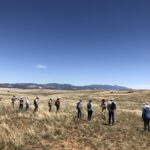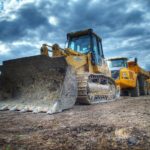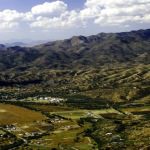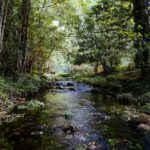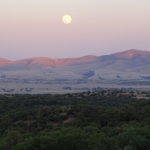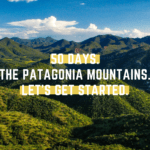Bruce Bracker, Lee Jones and John Maynard are running for a Board of Supervisor’s seat for Santa Cruz County District #3. Here are their positions on issues relevant to PARA’s mission to monitor the activities of industrial developers, such as mining corporations, as well as government agencies, to make sure their actions have long-term, sustainable benefits to our public land, our watershed, and our communities.
1. When considering an industry’s promise to bring jobs to our community, what other factors would you consider when deciding whether or not the overall impact of such activity would ultimately be good for the long term sustainability of our communities?
BRUCE BRACKER
All development in a community should respect the environment and meet all federal and state guidelines. We would prefer low impact industries that can create and sustain jobs. We also need to be aware of legislation that can have an adverse effect on our communities, such as the new FEMA mapping of Santa Cruz County. This will continue to impact us negatively for years and the incumbent supervisor handled its implementation very poorly.
LEE JONES
A. Hold true to my principals and not allow my decision to be swayed by special interest.
B. I would order a study to be done before any industry is allowed to commence to consider the over all impact of the industries investment into the county economically as a percentage of the over all county economy vs. the ecological cost based on factual data of comparable operations elsewhere over the: 1. initial exploration / permitting process, 2. production stages, 3. end of production and closing of operations (a 25 to 50 year span) The study would consider alternative land uses and the potential income of these alternative economic models verses the industries proposed usage.
JOHN MAYNARD
How we settle this county, I believe, will be our greatest legacy to the next generation. One of the most important functions of a County Supervisor is land use. I have written 2 comprehensive plans; one for our county and approved a third comprehensive plan while in office. I did not support the comp plan amendments proposed by out of county developers for Tubac 4 years ago. When making land use decisions, there are several factors I look at carefully. They come from my background as a landscape architect and others from my belief in the values of permaculture.
Jobs are always important; people need to feed their families. It comes down to a very basic premise that if one cannot eat they cannot survive and they are forced to move on to find food. At first, the promise to create jobs for a community can be very alluring. There is something, I believe, more important and that is sustainability. Does the proposed land use support future generations and their need to feed their families? That question should be asked. It opens up the impacts a proposed land use will have upon both the natural environment (air, water and earth) and the man made environment (streets, schools, drinking water, sewer, landfill and any other public services a town or county provides). As we know, there are always impacts, it is simply determining their extent and if there are negative ones, can we implement mitigation measures to minimize them. Now you are beginning to drill down into the actual design of a site and this is where permaculture principals should be applied.
2. As we desert dwellers are aware, water is a precious resource. What actions will you take to assure protection of the quality and quantity of our water resource?
BRUCE BRACKER
Every effort must be made to protect water resources. It is the most precious resource that we have in the South West. As for specific actions this is not my area of expertise. However my platform states that we need to “make use of the knowledge, experience and expertise of our Santa Cruz County residents” and if elected I plan to follow through with that commitment, and reach out to members of our community that have knowledge and expertise on water issues.
LEE JONES
Patagonia Lake is leaking, Pena Blanca Lake had to be drained and cleaned out because of old mine activity. Arivaca Lake almost dries up every year and has mine contamination problems as well. The Santa Cruz River is pumped heavily where it drops down into Mexico and is threatened by the potential bursting of the International Outfall Interceptor Sewer Main from Mexico. We superfund clean up sites in the county from industrial contamination being dumped down the drain and creating a chemical plume near Meadow Hills water wells. We can not ignore any of these crucial water issues. Sustainability of or water supply is paramount to continued economic growth. It is the job of government to protect our water supply. As your supervisor I will work to deal with these issues proactively.
1. Working with and supporting local groups concerned with our water supply. 2. Lobbying the federal government to make sure they understand what the residents want and insure that special interest do not determine the fate of federal lands which directly effect our water supply.
3. Do what ever it takes to insure that the International Outfall Interceptor is dealt with before we have a disaster of 12 million gallons a day of raw sewerage running through the Nogales wash and down the Santa Cruz River to Tubac.
4. Insure that the water quality coming out of the water treatment plants meets standard as we replenish our aquifers with this water. 5. Limit growth as necessary to insure that the aquifers are maintained at sustainable levels.
JOHN MAYNARD
In Arizona, the passage of the Groundwater Protection Act in the late 1980’s gave the AZ State Government control of most groundwater in Arizona. One reason this was done is that counties did not have the financial resources to adequately do this nor were they performing this function uniformly around the state. Through this legislation, the Dept of Env Quality (DEQ) was charged with protection of groundwater quality and the Dept of Water Resources (DWR) was given control of groundwater quantity. County Supervisor’s role in groundwater protection was limited by this legislation. The Santa Cruz River Valley was designated a Groundwater Active Management Area (AMA) in the early 1990’s. Unfortunately, it did not include Patagonia, nor its water shed, which both drain into the Santa Cruz basin. Should we expand the AMA to cover more of our county? Let’s look at what protection it offers this resource first. Inside an AMA a developer of land has to secure a 100 year water certificate from AZ DWR, outside an AMA he does not. When rezoning land inside an AMA, we ask the developer to comply with state law. Outside an AMA, we cannot turn down a rezoning request if there is no available groundwater, but we do require the developer to state on his subdivision plat that he “does not quarantine the provision of groundwater.” In other words, buyers beware. Santa Cruz County has recently passed a “Green Building Code” and Water Harvesting Guidelines, both of which we should encourage.
3. If you support open pit mining in the Santa Rita Mountains, Canelo Hills, Patagonia Mountains, and the San Rafael Valley, what is your proposed solution for the economic bust that will happen after the mines play out in 20 years (historical track record and what current mining applicants forecast as period of operation)?
BRUCE BRACKER
I do not support open pit mining in the Santa Rita Mountains, Canelo Hills, Patagonia Mountains, and the San Rafael Valley.
LEE JONES
I don’t necessarily believe there would be an economic bust. Mining is all around us in AZ and not all of the communities around the mines are busted. It is a fact that the mine operation over the 20 years could boost the local economy. If income from this operation could be invested wisely then that income could be just the thing we need. But could we trust the mine to follow all regulations thru the very end? Am unexpected event or accident could occur even if all of the proper procedures are followed. The problem is: potential negative cost to our environment as measured against other economic models. We don’t need another Superfund clean up in our county.
JOHN MAYNARD
I lived in a mining town and I know first hand what the long term impacts are upon a community. I do not support open pit mining and I have “put my money where my mouth is” by contributing to both PARA and SSSR.
4. If you do not support open pit mining in the Santa Rita Mountains, Canelo Hills, Patagonia Mountains, and the San Rafael Valley, what types of support do you suggest for fostering our existing economic business models such as local food production, wineries, eco- tourism, heritage tourism, etc?
BRUCE BRACKER
At this time the county does not have a plan to support or coordinate tourism. We need to bring all the regions of our county together to develop a plan. We could also look at other regions in the state that have similar industry sectors such as the Verde Valley Wine Consortium and see how they have approached their rural economic development challenges and opportunities and work with them to gain best practices.”
LEE JONES
1. Keep the cost local food production low by providing special property tax assessments for farmed land, this is to including small operations as well as large commercial operations that provide jobs such as the green houses by Amado AZ. 2. Wineries, Eco Tourism, Birding & Heritage tourism permitting cost could be donated back as in kind donations to non – profit events. 3. Work to have Recognition and Declaration of special areas in the county as a special habitat or usage areas to attract tourist. 4. Help to promote these industries at the county level.
JOHN MAYNARD
Supporting local and or regional food producers, as often as possible, is a start. The model my wife and I have been following is buying Arizona grown foods. I also believe there are opportunities to engage the University of Arizona, USDA and other organizations like the NRCD to hold a series of workshops to help educate those who want to grow, produce and buy local foods.
5. What other visions of sustainable economic activities do you have for our area?
BRUCE BRACKER
I believe that it is important to support the existing industries and businesses in our communities and create an environment that they can flourish in. In a county as small as ours we need to work together to foster the type of growth that we want. In the Eastern part of the county it is about tourism related industries and businesses. It is not about my vision for “our” area; these questions are answered by the communities and the people in the areas. The County needs to be at the table when these plans are developed and implemented. I feel that is important to have these plans in place if we expect to grow the way we want to. I plan to have an active role in facilitating and developing a plan that is unique to the east county. It should connect the area business to the Arizona Commerce Authority, regional economic development organizations and other initiatives including local foods movement initiatives.
LEE JONES
Because of our location tourism and international trade should be promoted. To attract new businesses tax incentives should be provided to new tax income generating business. Health care and education have both been proven as thriving business opportunities located on the international border with Mexico; we should actively recruit in these areas.
Retirement is an industry we need to promote. We have art and cultural diversity as well as the climate and physical beauty of the area to attract retirees the fastest growing segment of the US population.
Provide the leadership to organize the people, organizations, local governments and stakeholders to speak with a united voice and lobby the state and federal government. Public relations need to be provided in the interest of promoting the positives of the border county. Tourist and retirees and our southern neighbors can and will inject millions of dollars into our local economy and we can once again have a thriving bustling community. Tourism and international trade and retirement living are our biggest opportunities. The County Comprehensive Plan is due to be updated a five, ten and twenty year plan needs to be developed to provide a road map promoting these tourist and retiree opportunities.
JOHN MAYNARD
As I said in the first question, our greatest legacy will be how we settle our county and how the next generation is able to live here. It is imperative economic activities do not negatively impact our future generations’ ability to live healthy lives in.
I believe having access to reliable and high speed internet will allow residents to run businesses and work out of their homes. Recognizing rural America was at an economic disadvantage to urban America, I met with several other rural county Supervisors from around the nation at a National Association of Counties (NACO) conference. We started lobbying Congress for funding to make high speed internet service available to rural America. Through lobbying efforts of NACO’s Rural Action Caucus (RAC), Arizona received about $58 million to connect the 12 rural counties to internet service comparable to Phoenix’s quality and speed. The infrastructure is now under construction. It should be up and running in Santa Cruz County within 1 year. It will be used first by emergency responders; next schools will be connected (distant learning) and then the county library system. Finally, small businesses and residences will find bandwidth available for their use. This will have a dramatic impact upon our county’s economic development efforts.
As a non-profit organization with a pending IRS 501-c-3 application, Patagonia Area Resource Alliance (PARA) can not endorse specific candidates. PARA can ask questions of all candidates regarding their positions on issues relevant to PARA’s mission.

